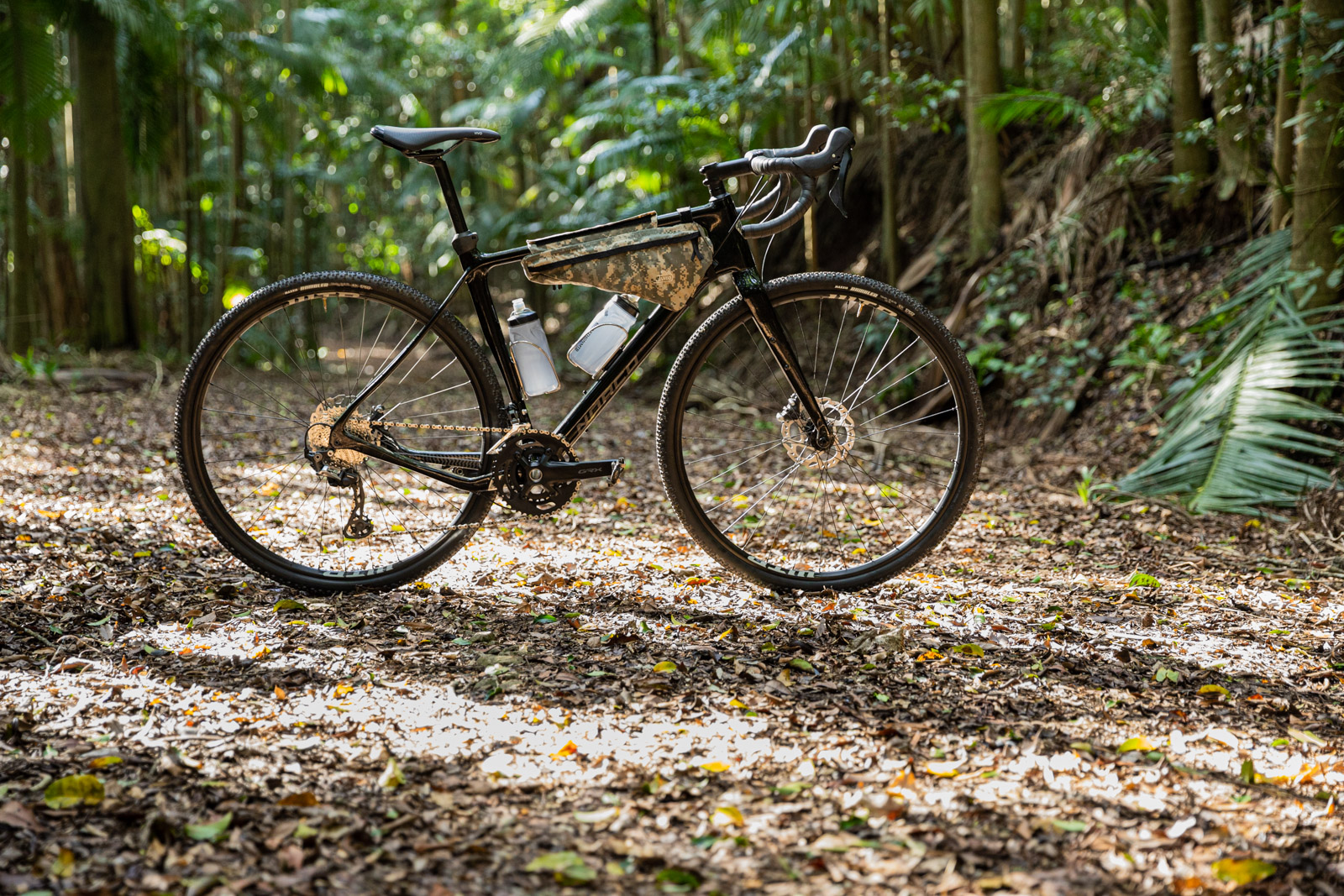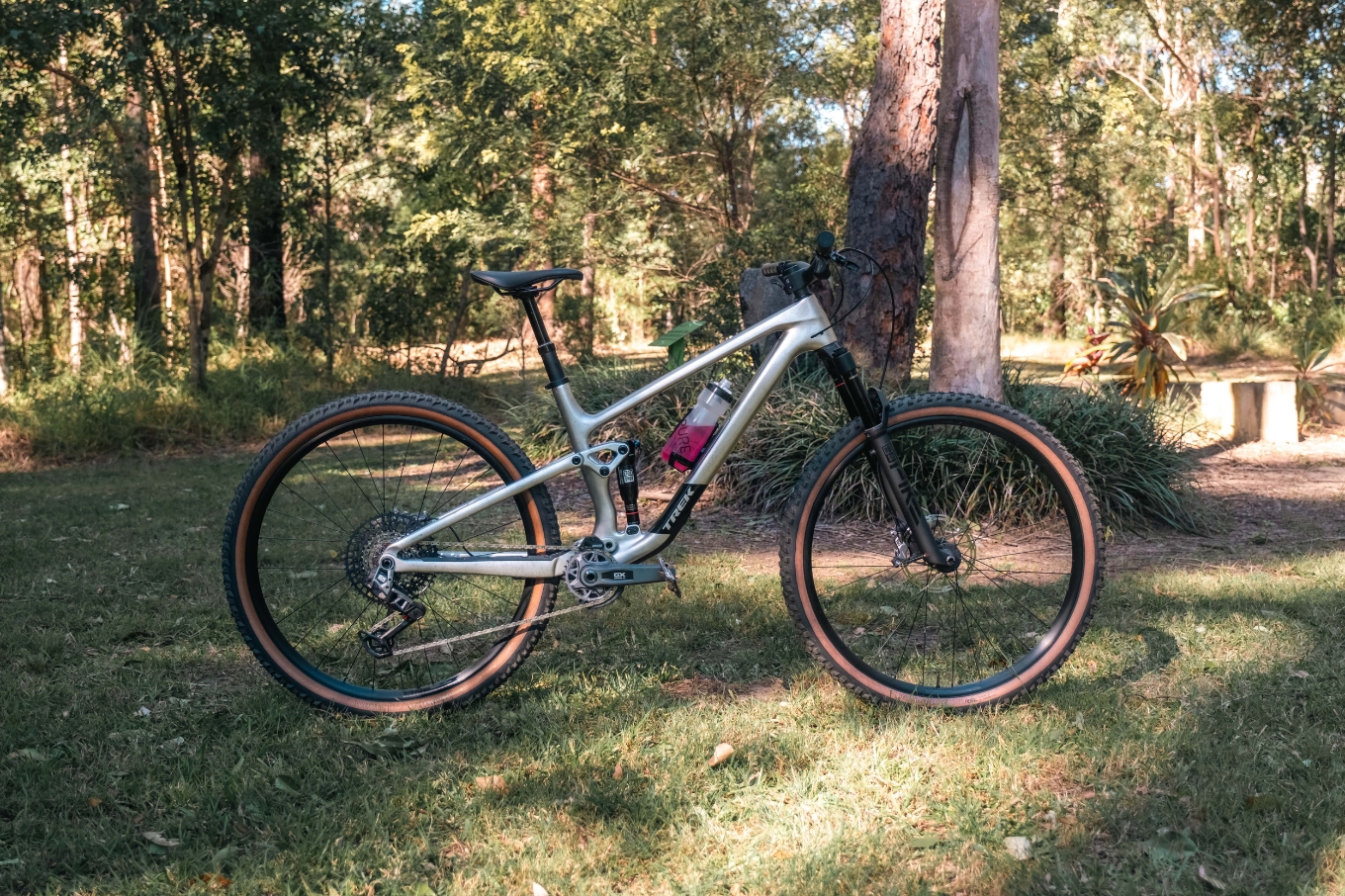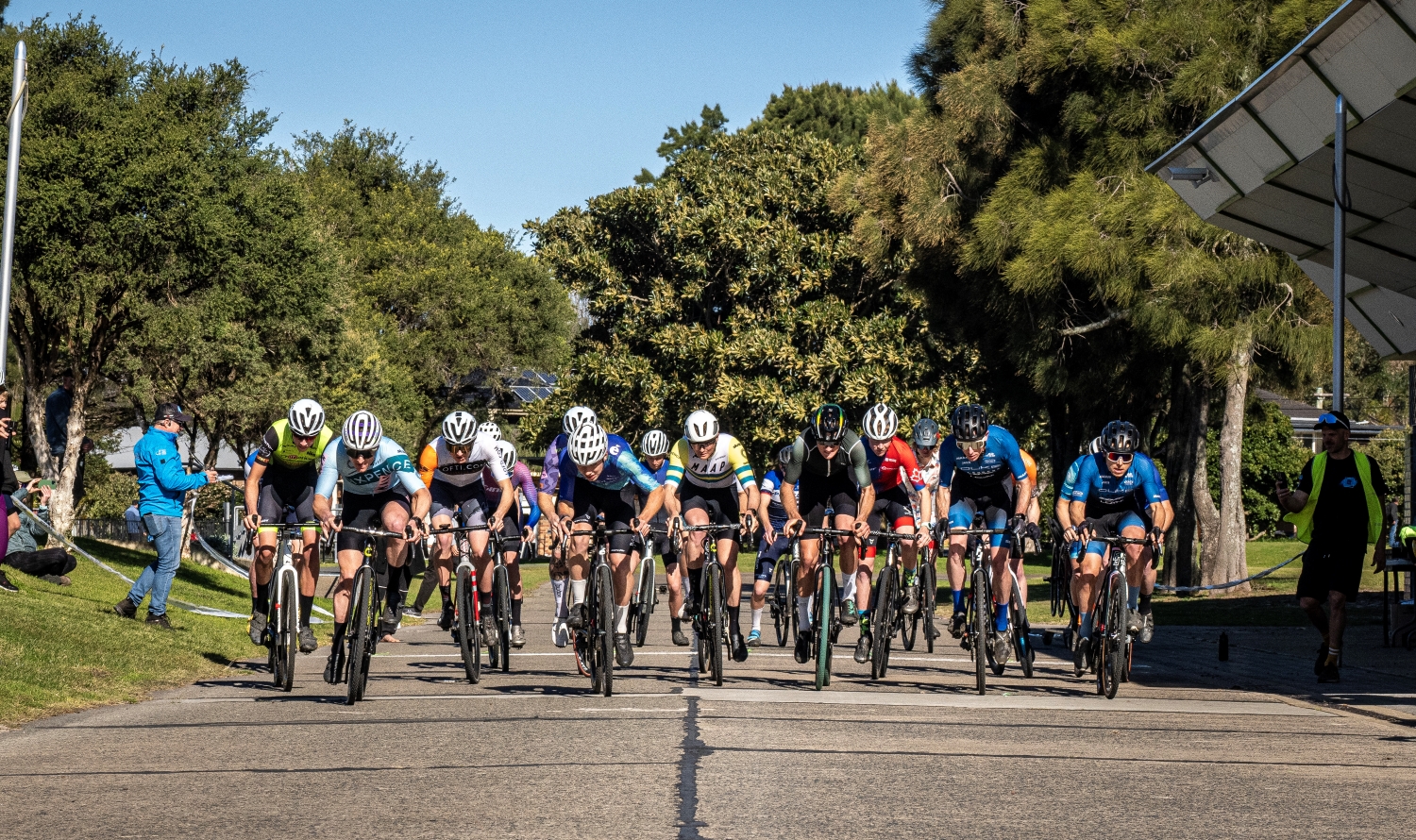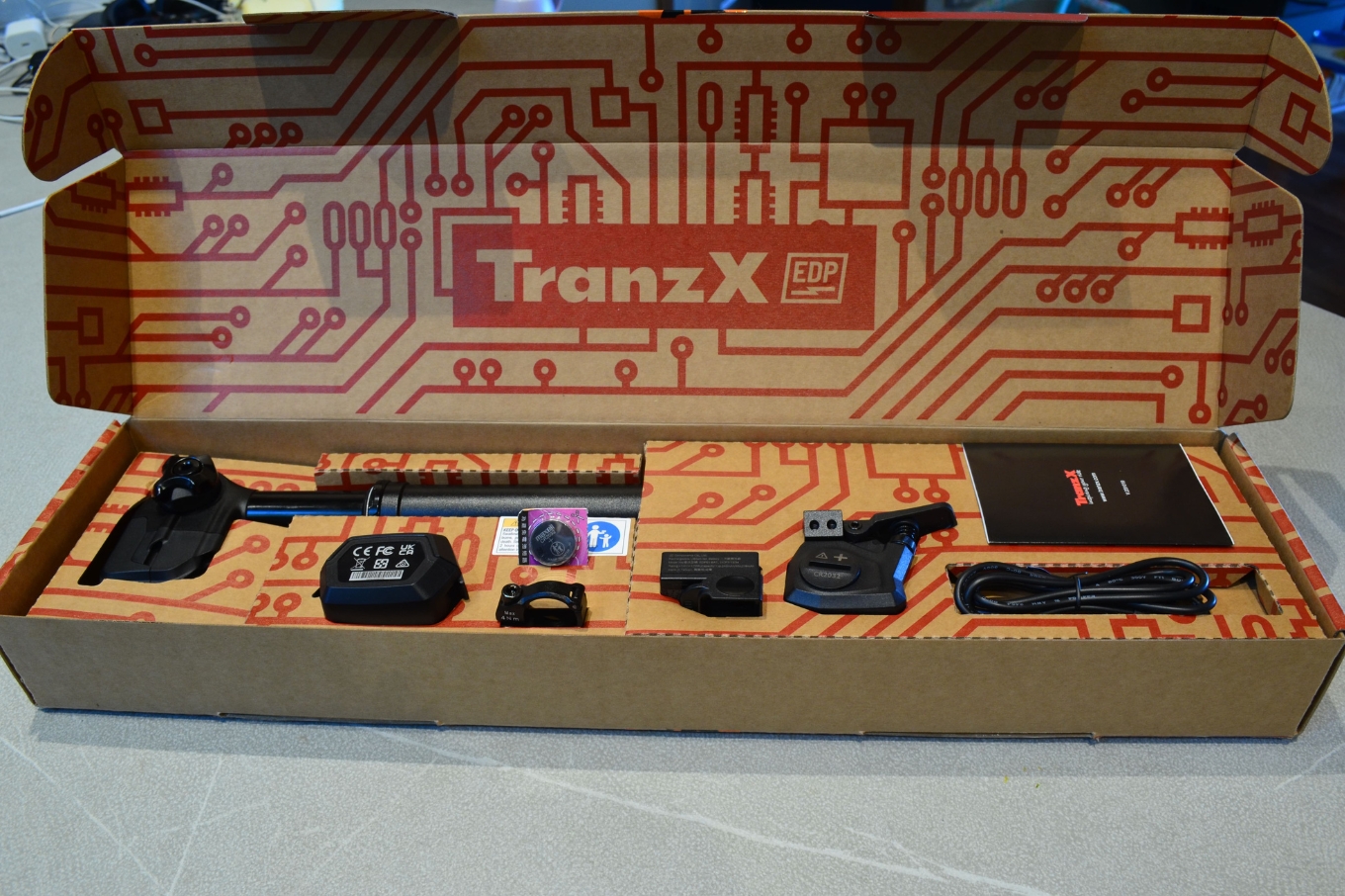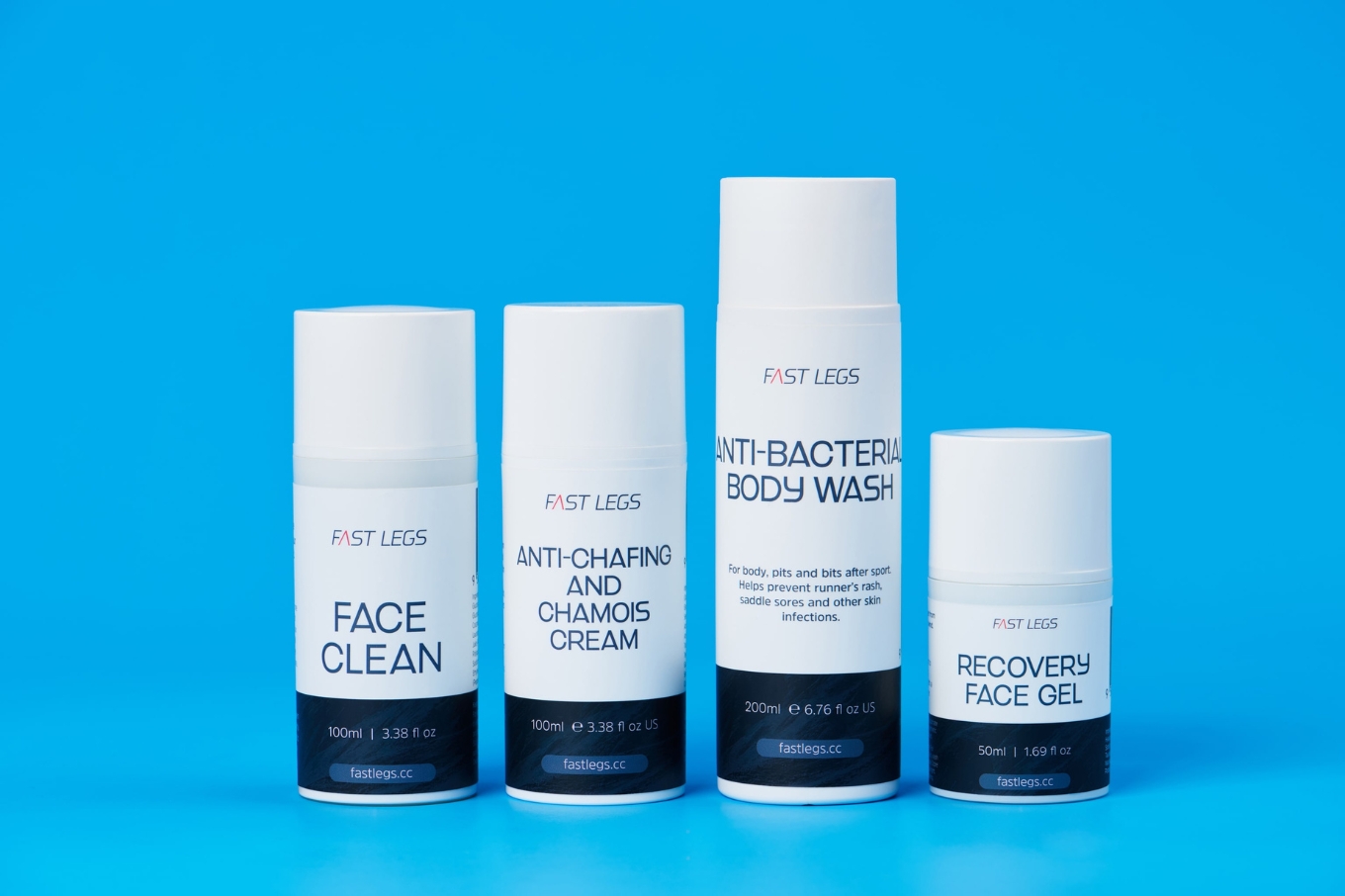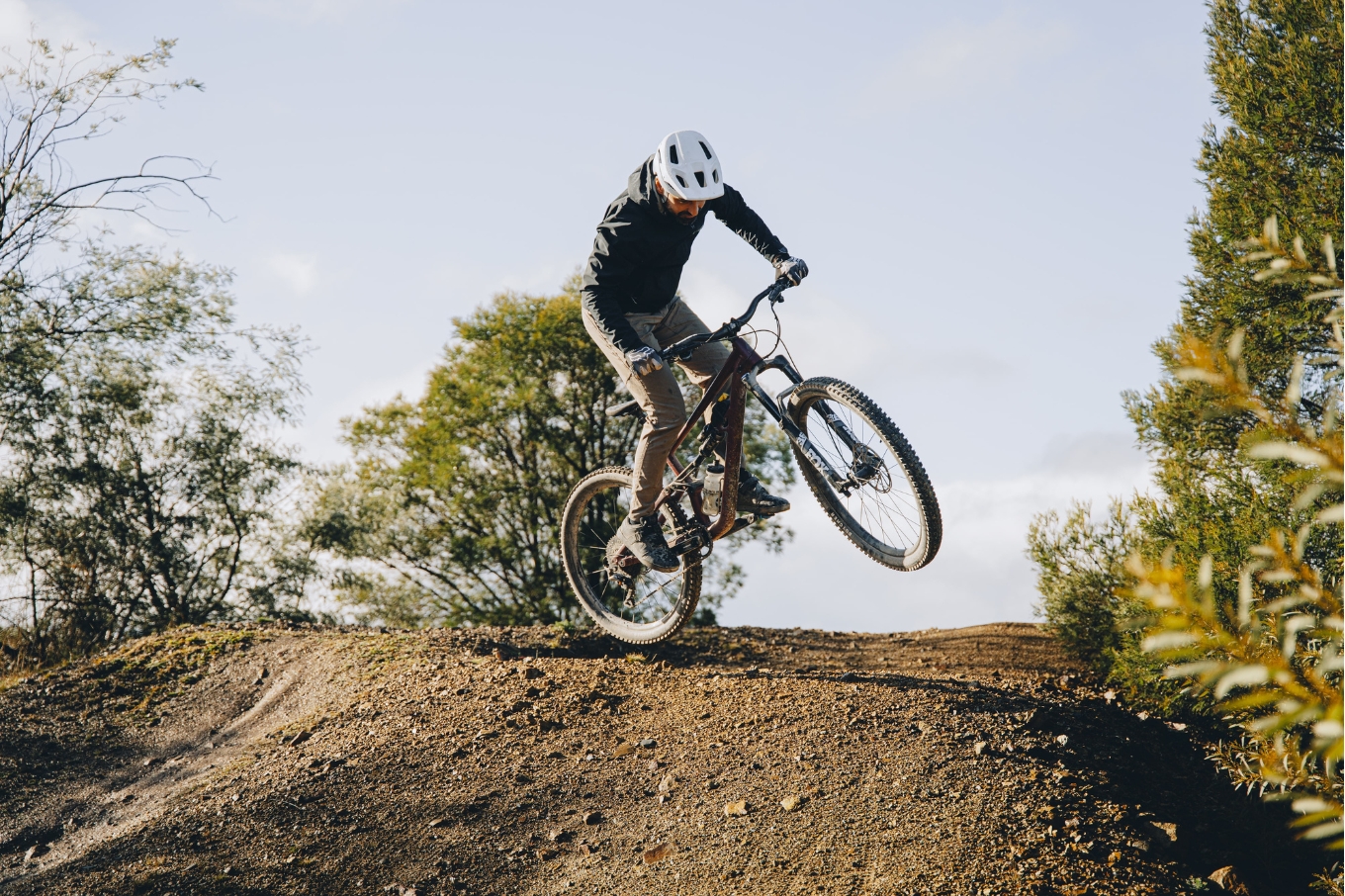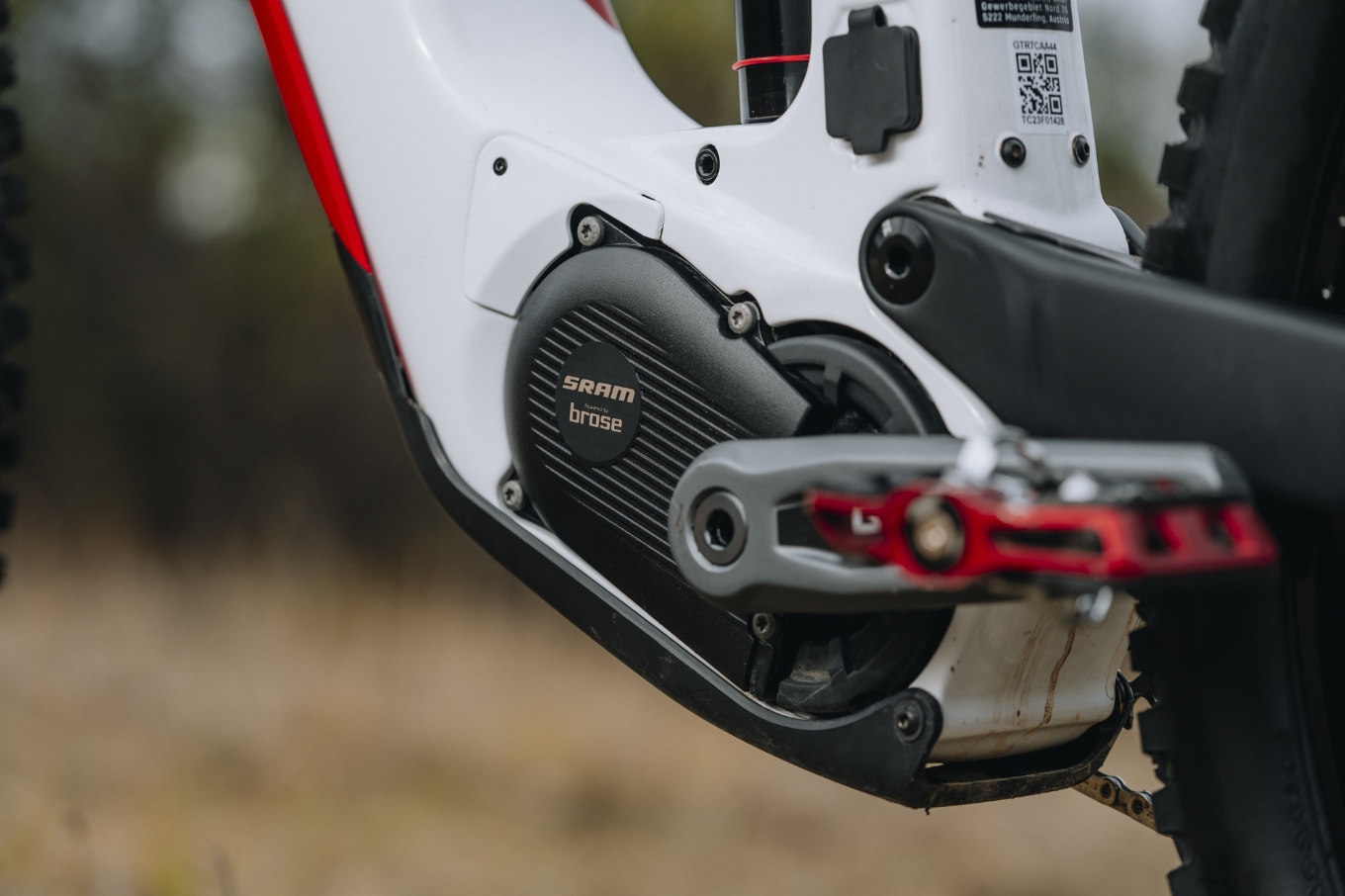TESTED: Norco Search XR C
Gravel curious? The Norco Search XR could be the bike for you!
Words: Mike Blewitt
Photos: Colin Levitch
Norco are well-known in the mountain bike realm here in Australia, but the Canadians have a thorough line up of drop bar bikes as well, from the Tactic road bikes, the Threshold cyclocross bikes, the Search all road bikes and the one on test here – the Search XR C, which is a carbon model with a 2×11 gravel specific GRX group set from Shimano. There are steel frame models in the range as well.
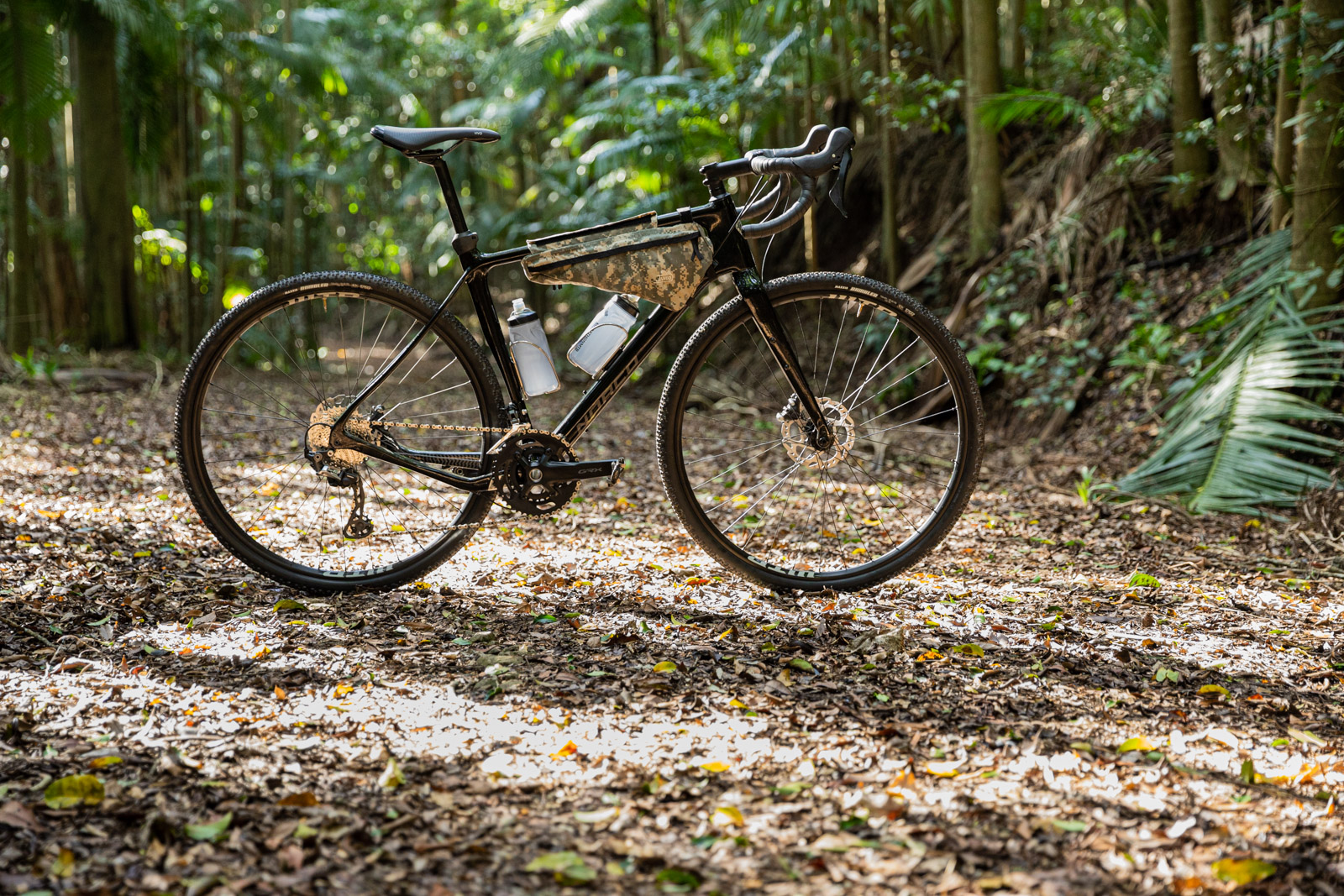
Let’s be clear – this is a gravel bike in a mountain bike title. With the modern mountain bike morphing into a longer travel, truly capable mountain bike for how our trail networks are developing, gravel bikes like this are filling a gap that might have been served by an older hardtail. With roads getting busier, there’s plenty of reasons why a gravel bike would make a lot of sense for any mountain biker looking for a fast and efficient bike to get some more time on the pedals.
Initial Impressions
The Norco Search XR range is based on their all road Search platform, with ‘extended range’. They have more clearance, lower gearing options, and are built towards more rugged off road adventures. Be that bikepacking, gravel grinding, ultra distance rides or riding in sloppy northern hemisphere winters. With a full complement of hidden mounts for mud guards, a sealed seat tube, lots of tyre clearance and five water bottle mounts, the Search XR C on test sure is set for adventure.
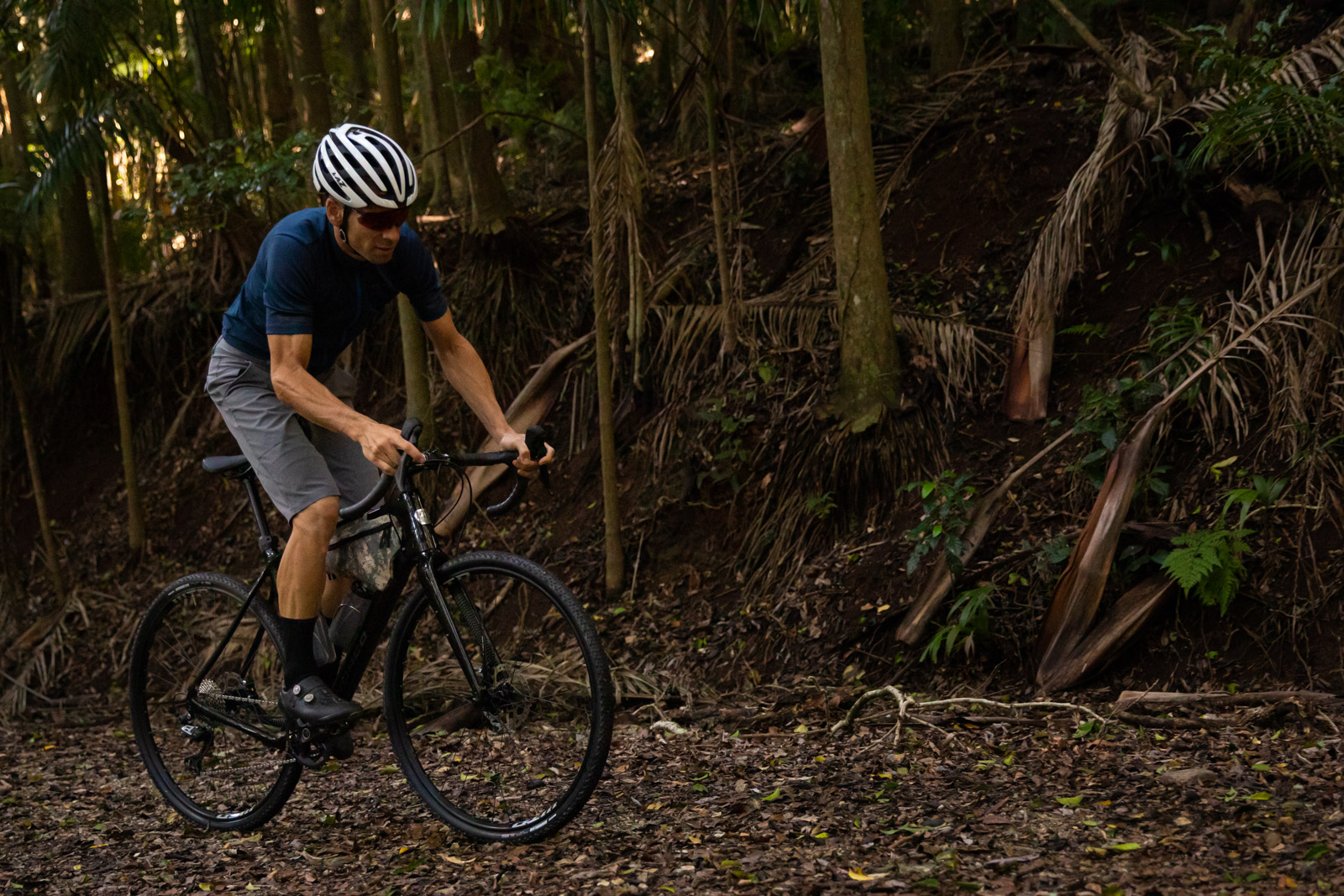
Norco make this model in 700c wheel sizes and 650b variants in smaller frame sizes. The bike on test has 700x40mm rubber, but can take 42mm tyres for a little more cush. The frame has also been designed to run with 650b wheels, where it can take a maximum 51mm tyre. The smaller 650b frames can even run 26” wheels for more tyre width! Their size range means riders from 147cm to 200cm can be covered.
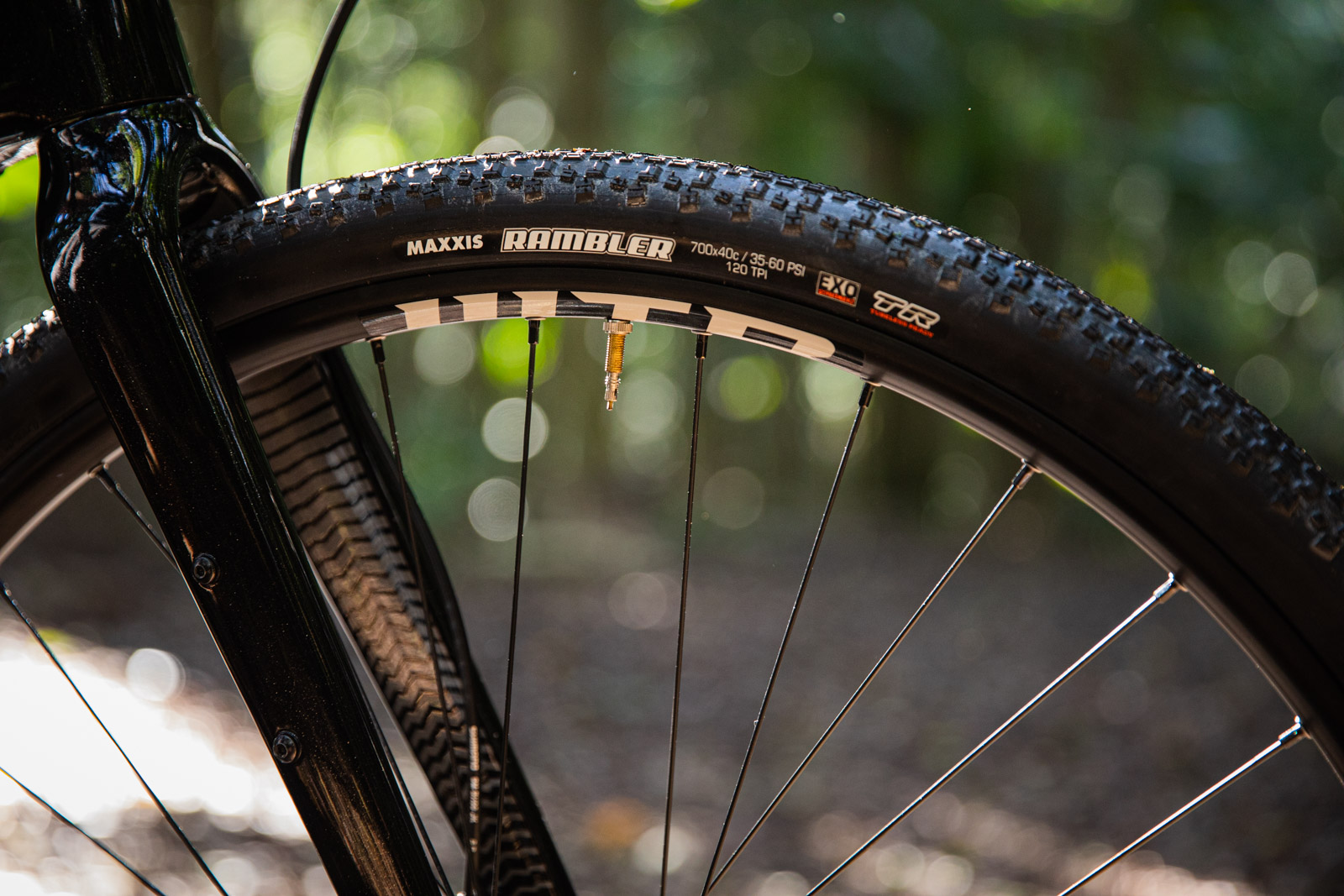
The full-carbon frame and fork has internal cable routing, using the same system to secure the outer as seen on Norco’s mountain bike range. The Search XR C has a black paint job with a very subtle silver fleck in it. Compared to a road bike, endurance road bike or cyclocross bike, the Search XR C has more relaxed geometry, to give greater confidence on dirt roads. That means a lower bottom bracket, higher bars, longer wheelbase along with the slightly slacker angles. Add flared bars for greater stability and more movement for bunny hops, tubeless ready wheels and tyres, through axles, hydraulic disc brakes, a clutch rear mech and good standover – a bike like the Search XR C is the mountain biker’s road bike.
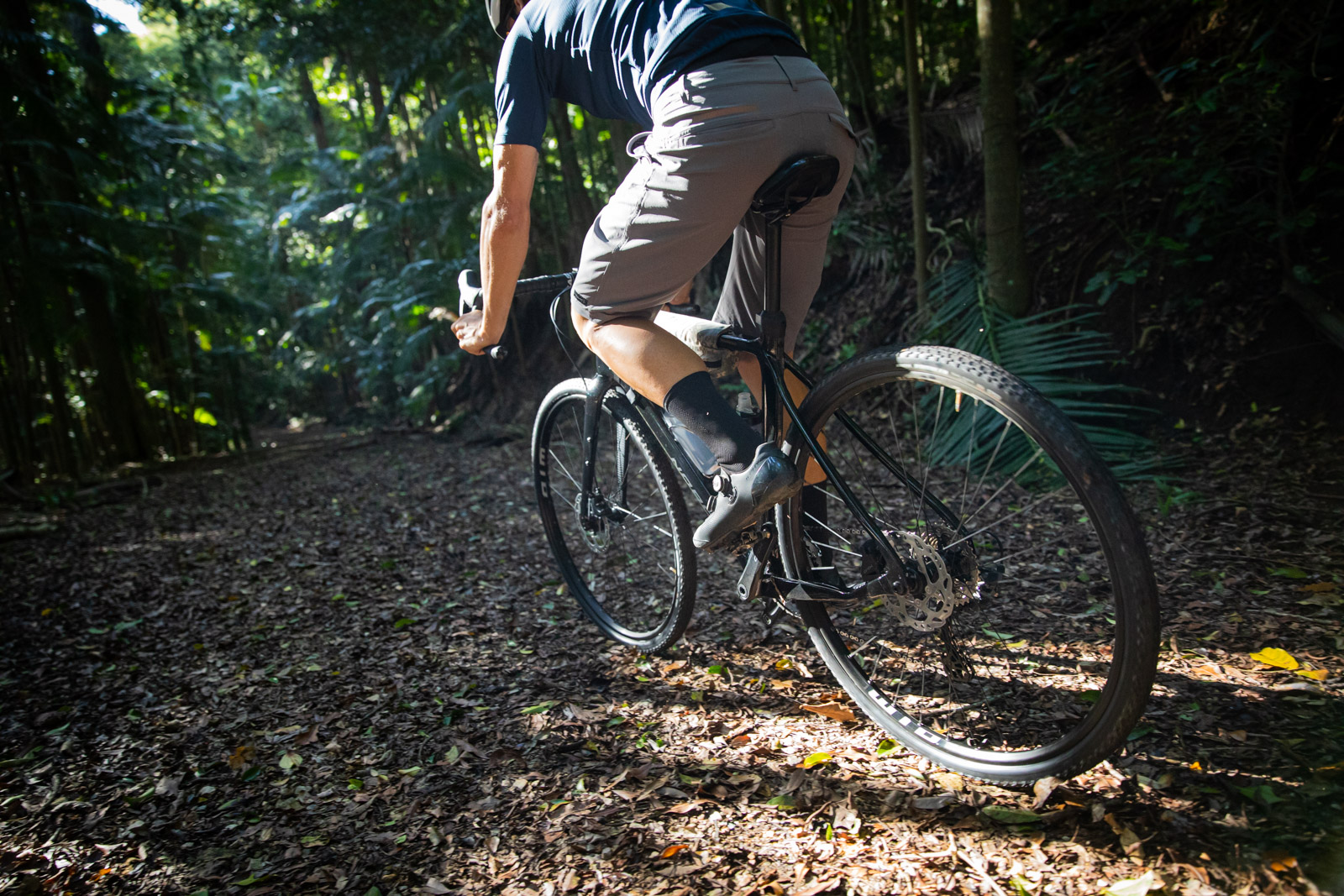
At 9.24kg the Search XR C is not a feather weight road racing bike – it isn’t designed to be. But it’s a good weight for such a capable gravel bike – and lighter than any mountain bike I have owned.
My only concern with the bike was how close the disc goes to the frame when fitting the rear wheel. While pulling the mech back to clear the cassette it was still easy to gouge the frame with the disc. Obviously this isn’t a problem for clearance when fitted, just fitting. The rear through-axle could be more direct with how it lines up. I’ve built, tested and owned a number of recent Norco carbon bikes and the rear through-axle fitments on most of them haven’t had the greatest accuracy. It’s all good once in, but getting it there can be frustrating.
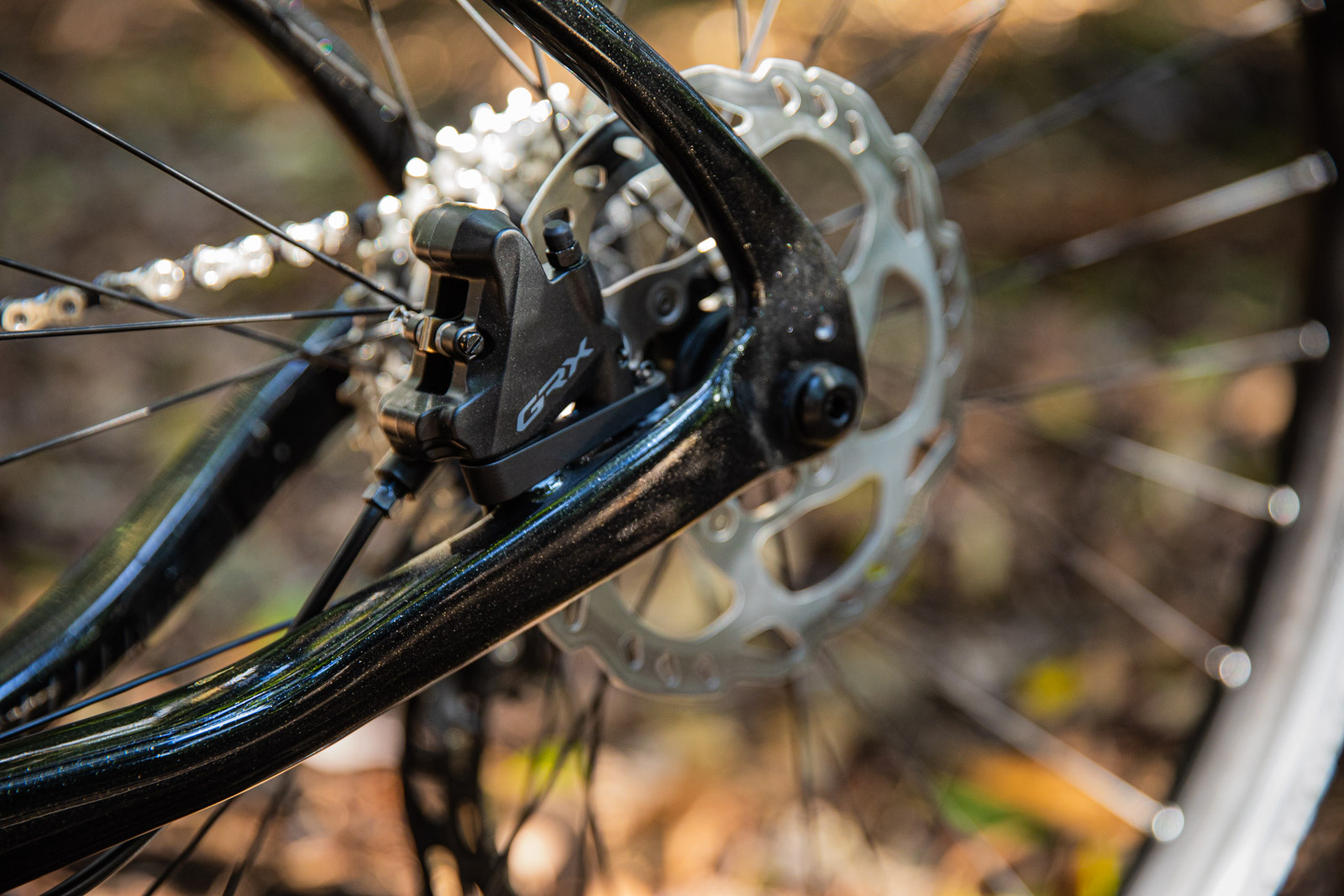
On The Trail
The rides I took the Search XR C on all started on tarmac. Not baby bum smooth roads, but on rough country roads, while heading towards hills, forest roads and 4WD routes. With the Maxxis Ramblers set up tubeless (valves are provided and tape is fitted) on nice 23mm internal rims, the ride on the full carbon frame and fork was really comfortable. Lots of things add up to create this, including a fairly upright riding position, and the flared bars. The Selle Royal Vivo seat gets a shout out for lounge chair comfort levels without being too big to get in the way! Make no mistake, the frame and fork are carbon and quite stiff, and you want them to be if you’ll be loading them up with frame luggage. So comfort really comes from getting your fit correct and the tyre set up just right.
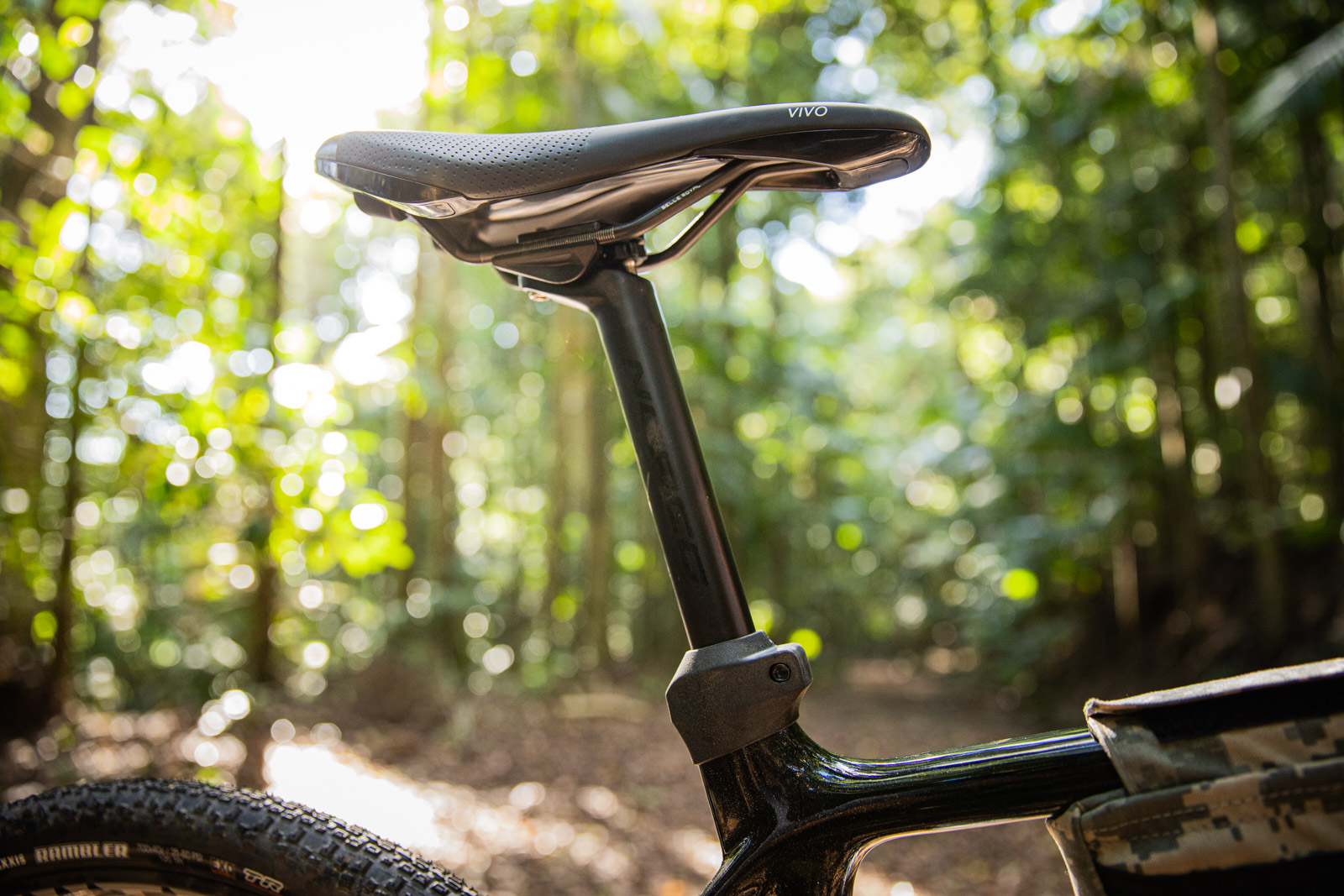
While the position was more upright, the Search XR C didn’t flop around when out of the saddle and in the drops giving it some beans up a rise. It feels nice and direct. When the rough roads turned to dirt, the bike really started to hum along. I’d set 45psi in the front and 50psi in the back, and I think tyre pressure on a gravel bike is a recipe for success or disaster – it pays to find the right tyre and pressure combination for you. Your contact patch is smaller than on a mountain bike so you really want to get it right, as it will change steering, braking and acceleration. Rim protectors for gravel bikes are a thing, and something worth looking into to really tune in comfort and traction.
The Shimano GRX group set also started to shine off road. Riding with your hands resting in the hoods of the shifters is a comfortable place to be, and the more pronounced support of the GRX shape is appreciated off road. It’s not a big unit to hold, but helps reduce the feeling like your hand will slip forward. Your most secure position when the dirt points down is in the drops, and the flared drop means a wider stance, and a lower position puts weight on the front wheel to keep it stuck. The GRX levers are long and easy to reach even in the flared drops.
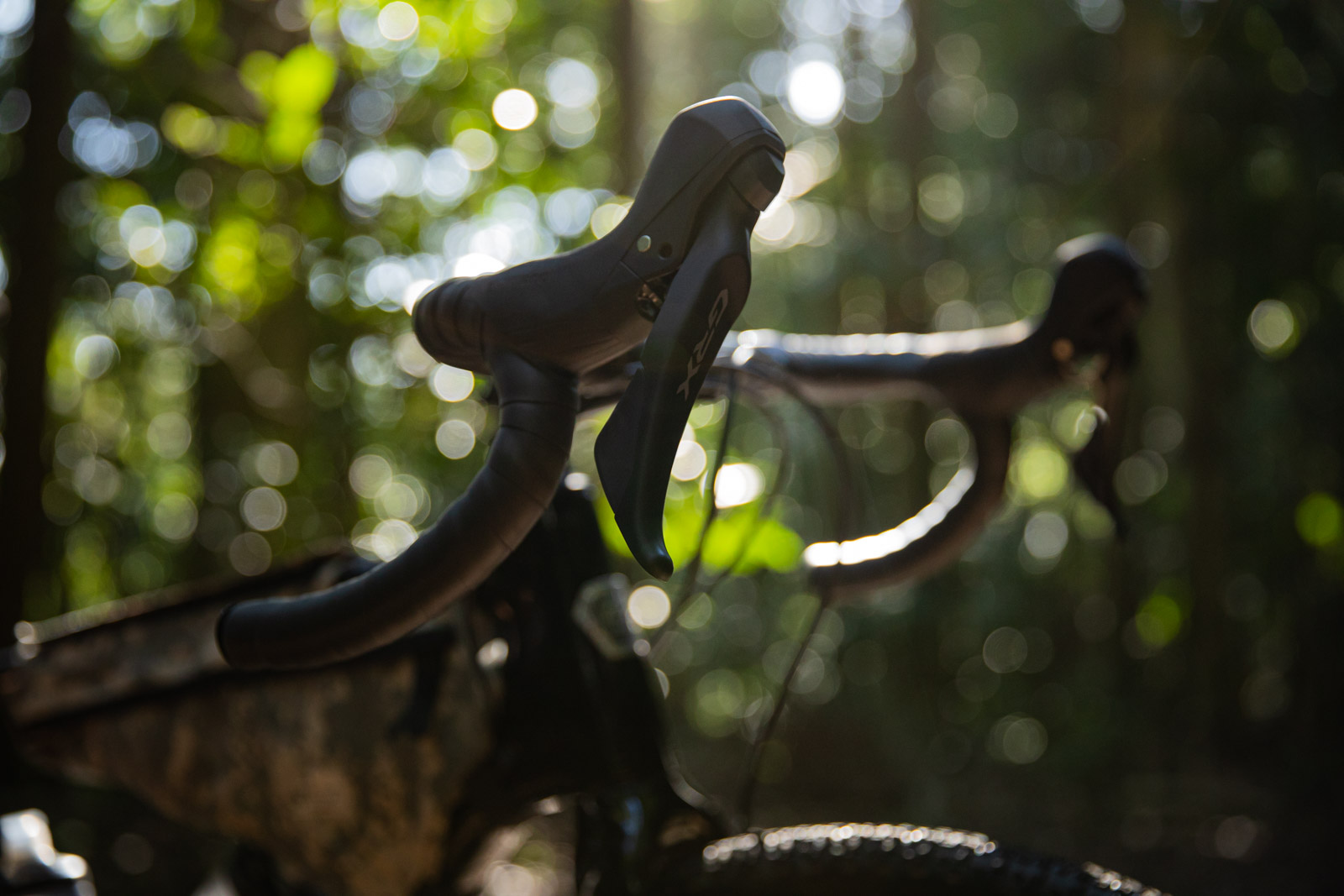
The clutched rear derailleur stopped any chain slap as well, just like Shimano derailleurs do on mountain bike group sets. I’ve got a Shimano road group on my cyclocross bike and when I push its limits there’s a lot of chain slap – the GRX group set eliminates that. The chain ring sizing is also worthy of praise. Having a 46×11 top gear is just high enough for fast road descents on back roads, but that 30t small ring and 34t low sprocket really helps make for a wide range. One longer route I tackled has sustained 17% climbs, and this gear range was greatly appreciated, especially when the terrain was a little looser and I didn’t have to grind away, which wreaks havoc with traction.
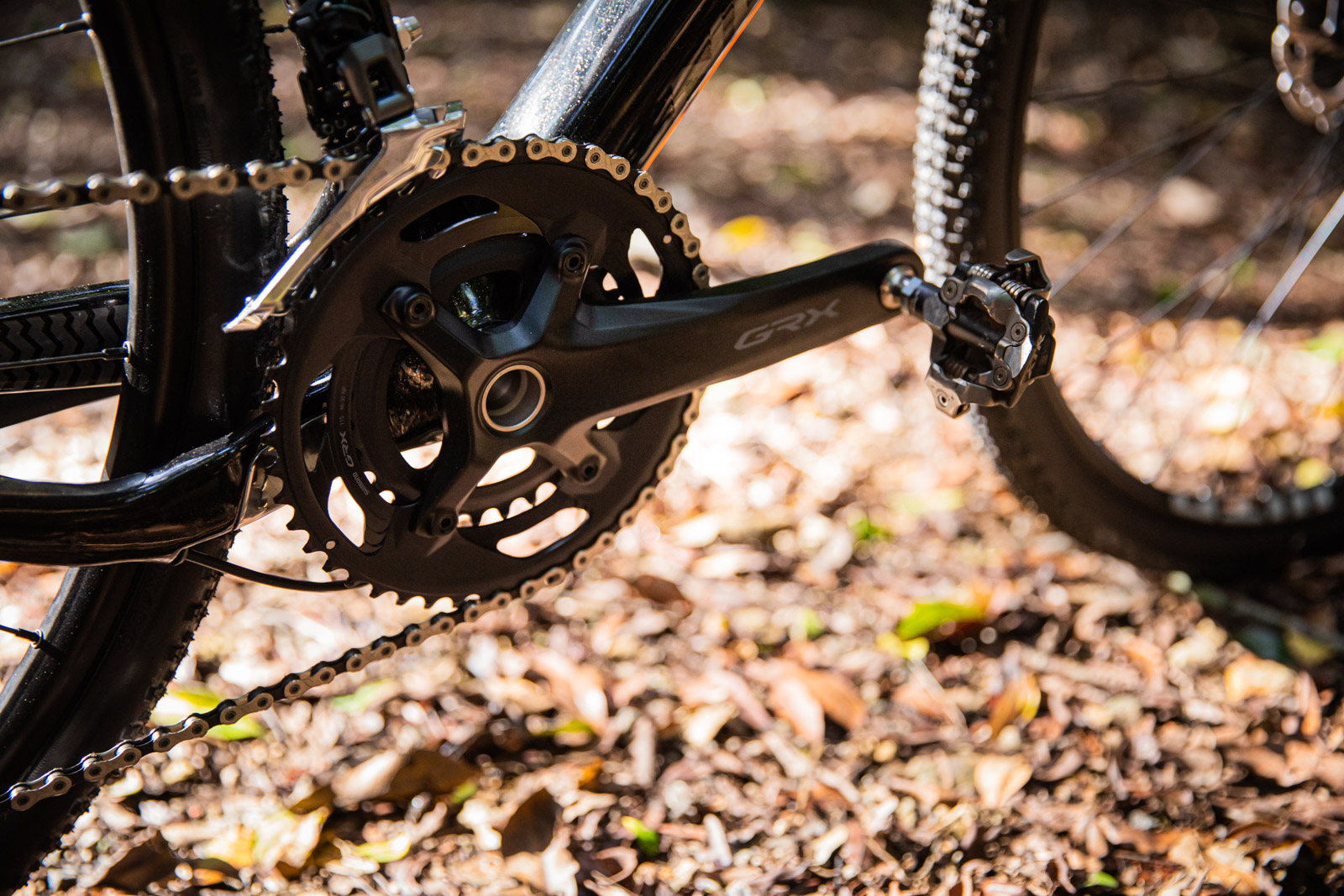
The steadier, stable geometry of the Search XR C worked perfectly on faster dirt roads and long, winding descents. It worked hand in hand with the flared bars and strong flat mount brakes on 160mm rotors. I was certainly more comfortable to let the bike run free when I had a clear line of sight – even when loaded up with a frame bag. The biggest loop I took the Search on was one I have ridden on my cross-country bike as well – and I didn’t end up any more beaten up on the Search. The Search XR C proved to be capable on forest roads, and could handle fun singletrack too – but it’s not particularly agile thanks to the steady geometry. With the ability to easily fit frame luggage for overnight trips, the limits of a bike like the Search XR C come down to the limits of your imagination.
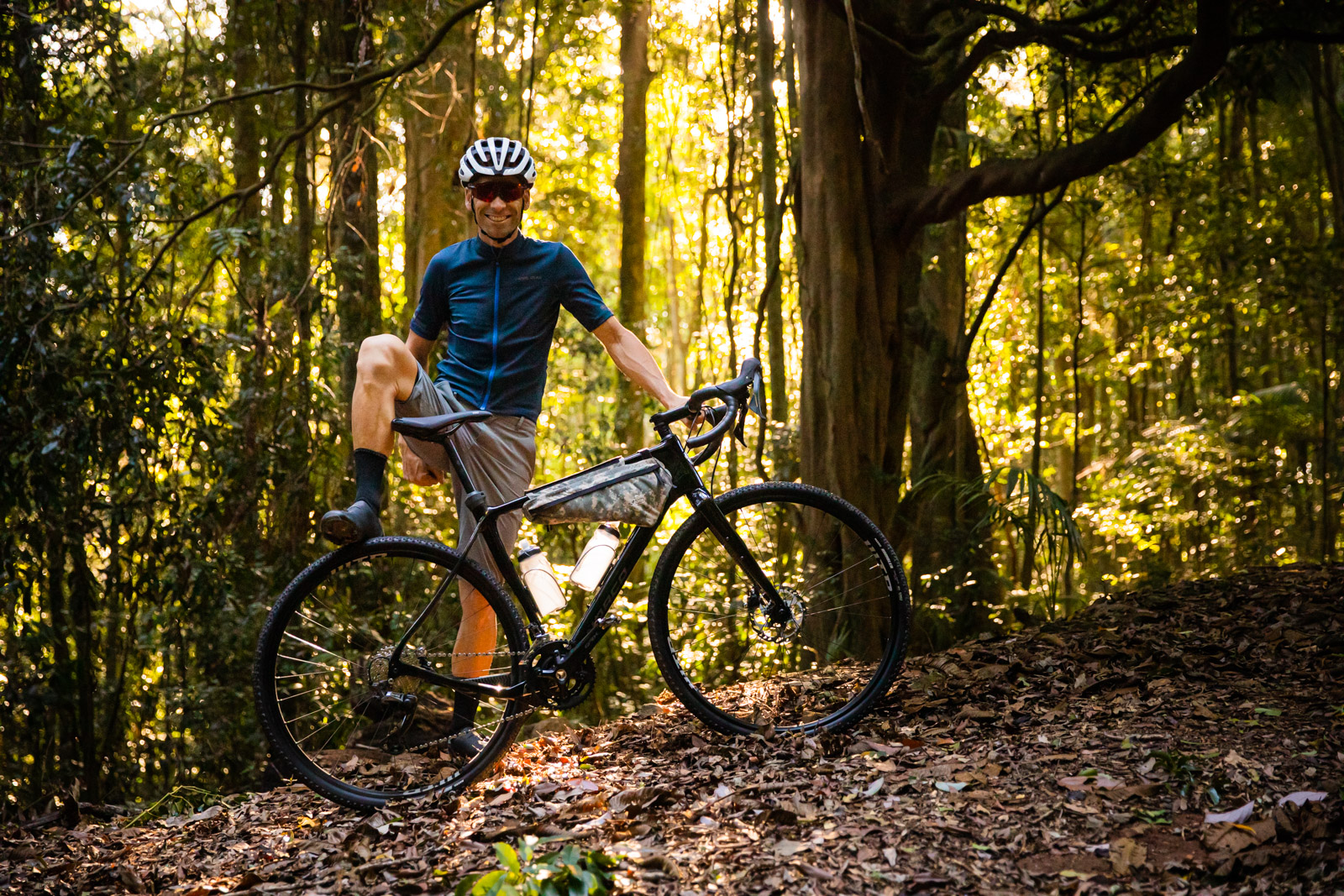
Our Take
If you have seen the explosion of gravel riding images on social media and want to jump in, a bike like the Norco Search XR C is an excellent place to look. It has a gravel specific group set, which pays off for gearing, chain security, gear range and comfortable and secure contact points. Being able to take 42mm tyres is a bonus, and I wouldn’t consider looking at a bike which was limited to anything less for gravel. If you have your heart set on some long, dirt road adventures, then I would highly recommend visiting your Norco dealer to ask about a Search XR model.
RRP: $4199
From: Norco Australia

